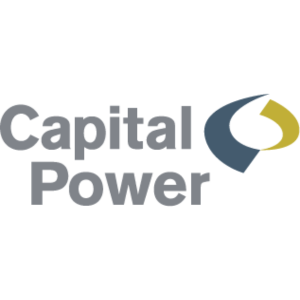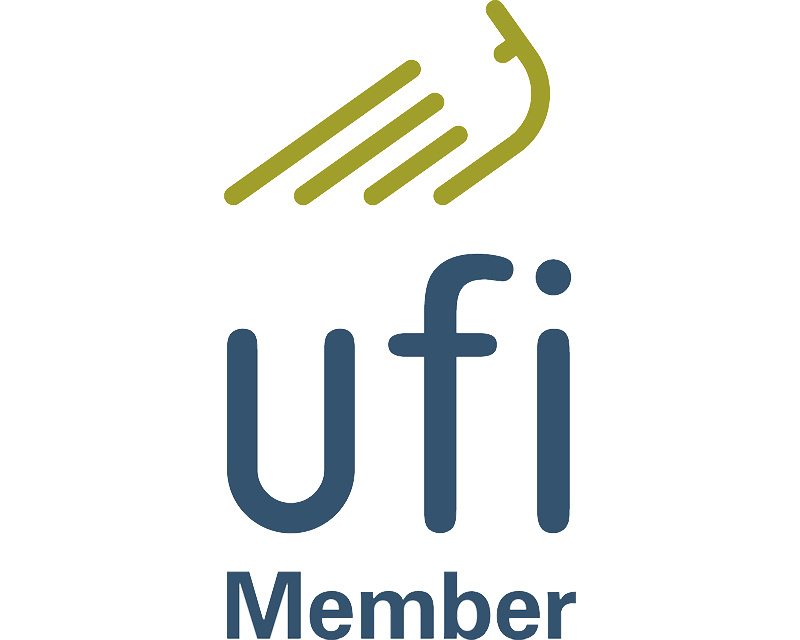- 10 30 AM
Genesee Generating Station - The Heart of Alberta's Decarbonized Future
At Capital Power, we’re powering a sustainable future for people and planet. Our dedication to this purpose drives our innovation at the Genesee Generating Station where we are executing our decarb...
Knowledge Partner : Capital Power
 Exhibition Floor
Exhibition Floor 10:30 AM - 11:15 AM
10:30 AM - 11:15 AM
Genesee Generating Station - The Heart of Alberta's Decarbonized Future
 10:30 AM - 11:15 AM
10:30 AM - 11:15 AM Exhibition Floor
Exhibition Floor
At Capital Power, we’re powering a sustainable future for people and planet. Our dedication to this purpose drives our innovation at the Genesee Generating Station where we are executing our decarbonization strategy including repowering to natural gas and advancing plans for carbon capture, utilization and sequestration. We’re excited to share details about the important work happening at this site where dispatchable base-load generation will power Alberta’s low carbon future.
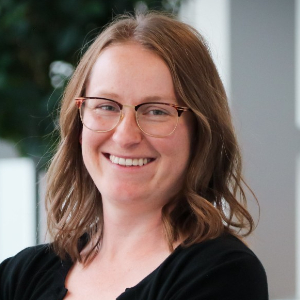

- 11 30 AM
Surface Risks: From Public Perception to Project Approval
The presentation will discuss the role of stakeholder involvement in the approval of CCS projects in Alberta. He will provide guidance for project developers on how to reduce regulatory risk from s...
Knowledge Partner : Capital Power
 Exhibition Floor
Exhibition Floor 11:30 AM - 12:15 PM
11:30 AM - 12:15 PM
Surface Risks: From Public Perception to Project Approval
 11:30 AM - 12:15 PM
11:30 AM - 12:15 PM Exhibition Floor
Exhibition Floor
The presentation will discuss the role of stakeholder involvement in the approval of CCS projects in Alberta. He will provide guidance for project developers on how to reduce regulatory risk from stakeholder opposition, and include an overview of the tools available to support a successful permitting process. This presentation will highlight the following:
• What concerns are stakeholders likely to have
• How does the Alberta regulatory process encompass CCUS, and specifically, stakeholder input and issues
• Recommendations to developers on how to optimize the regulatory process
• Tools available to work effectively with stakeholders and to build trust with external parties
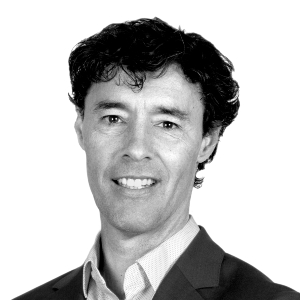
- 10 30 AM
Genesee Generating Station - The Heart of Alberta's Decarbonized Future
At Capital Power, we’re powering a sustainable future for people and planet. Our dedication to this purpose drives our innovation at the Genesee Generating Station where we are executing our decarb...
Knowledge Partner : Capital Power
 Exhibition Floor
Exhibition Floor 10:30 AM - 11:15 AM
10:30 AM - 11:15 AM
Genesee Generating Station - The Heart of Alberta's Decarbonized Future
 10:30 AM - 11:15 AM
10:30 AM - 11:15 AM Exhibition Floor
Exhibition Floor
At Capital Power, we’re powering a sustainable future for people and planet. Our dedication to this purpose drives our innovation at the Genesee Generating Station where we are executing our decarbonization strategy including repowering to natural gas and advancing plans for carbon capture, utilization and sequestration. We’re excited to share details about the important work happening at this site where dispatchable base-load generation will power Alberta’s low carbon future.


- 11 30 AM
A Path to Optimizing Fit-For-Risk, Cost-Effective, Monitoring Measurement And Verification (MMV) Plans for CCS Storage Projects
Execution of monitoring, measurement, and verification (MMV) plans provide surveillance activities that ensure the safe and reliable operation of a CO2 sequestration project throughout the project...
Knowledge Partner : Capital Power
 Exhibition Floor
Exhibition Floor 11:30 AM - 12:15 PM
11:30 AM - 12:15 PM
A Path to Optimizing Fit-For-Risk, Cost-Effective, Monitoring Measurement And Verification (MMV) Plans for CCS Storage Projects
 11:30 AM - 12:15 PM
11:30 AM - 12:15 PM Exhibition Floor
Exhibition Floor
Execution of monitoring, measurement, and verification (MMV) plans provide surveillance activities that ensure the safe and reliable operation of a CO2 sequestration project throughout the project lifecycle. Measurement and monitoring of the injection facilities, geological sequestration site and surrounding environment provide assurance that CO2 is confined to the storage complex (containment). Verification refers to the comparison of measured and predicted performance and is used to ensure sequestration sites are operating as predicted and permitted (conformance). The MMV plan is developed in response to identified risks, develop mitigation measures, and to fulfil regulatory requirements.
Our goal is to create a fit-for-risk monitoring system that optimizes data usage from different sources. This will enable real time reporting and optimization and facilitates integration into our reservoir model, to provide the most complete picture of plume migration and anticipated subsurface conditions.
However, there are multiple challenges that present themselves during the optimization process not least the large spectrum of measurement technologies with different measurements and depth of investigation. These include, but are not limited to, geophysical, in-well, geochemical, atmospheric, marine, and fluid metering monitoring technologies and techniques. Understanding the applicability of each technology to a given project and providing a plan that allows for full adherence to regulatory requirements and maintaining full integrity of the storage complex whilst also delivering the most cost-efficient solution is critical to the development of an economic CCS storage project.
An additional challenge is the large volume of data generated during the monitoring process. For example, a permanent fiber installation for microseismic monitoring may generate Terabytes of data per day which in turn can limit the amount of data that gets properly analysed or the turnaround time with which it is evaluated. Novel applications of AI/ML driven techniques to analyse and highlight data for further interrogation and significantly reduce the volume of data being transferred will become extremely valuable to better utilization of the acquired information.
Overall, we focus on the optimized selection of measurements with a Value of Information (VOI)/risk management driven approach. This process also includes optimization of injection and monitoring well placement which becomes paramount for large scale storage hubs with multiple wells of each type.
With this presentation we will demonstrate that we can deliver the most robust cost effective MMV solution that provides the critical License to Operate (LTO) and full adherence to regulatory requirements whilst optimizing technology deployment and minimizing costs for the project throughout the lifecycle.
- 12 30 PM
Flexible Steel Pipe Helps Solve Five Challenges of CO2 Transportation
Pipelines are a crucial part of the global effort to decarbonize the energy industry. While CO2 is a common component in the hydrocarbon mixtures produced in the oil and gas industry, it has signif...
Knowledge Partner : Capital Power
 Exhibition Floor
Exhibition Floor 12:30 PM - 1:15 PM
12:30 PM - 1:15 PM
Flexible Steel Pipe Helps Solve Five Challenges of CO2 Transportation
 12:30 PM - 1:15 PM
12:30 PM - 1:15 PM Exhibition Floor
Exhibition Floor
Pipelines are a crucial part of the global effort to decarbonize the energy industry. While CO2 is a common component in the hydrocarbon mixtures produced in the oil and gas industry, it has significantly different properties when pumped as a standalone fluid in the supercritical state. Many materials used in the existing and newly constructed pipelines experience challenges when used for the supercritical CO2 service. Flexible steel pipe is the pipe technology that solves these challenges in pipeline construction, operation, maintenance, and risk management. This presentation will describe the distinct advantages of flexible steel pipe that enable fast, reliable, long-term, and safe construction of new pipelines and rehabilitation of the existing pipelines. The ability to repurpose the existing pipelines and convert them from a liability into a valuable and economically feasible network of CO2 pipelines is the primary advantage of flexible steel pipe. The excellent tensile capability of the product allows for pulling up to 2-3 km at a time which requires minimal excavation of the existing pipeline sections. The high-pressure capability and corrosion-resistant properties of the HDPE-based flexible steel pipe provide a brand-new pipeline with a pressure rating higher than the host pipe and a 20+ year design life. The ability to install flexible steel pipe with minimum resources reduces the Right-Of-Way requirements and simplifies the installation of the new pipelines to the CO2 emitters historically not connected to the energy pipeline network. The longer spoolable flexible steel pipe sections require less equipment and personnel for pipe deployment, which makes the construction safer. The composite structure of the flexible steel pipe addresses the risk of rapid crack propagation pertinent to carbon steel pipelines and minimizes the risk of catastrophic pipeline failure in case of a leak. The simplified integrity management for the technology significantly reduces the operating expenditure for the project and reduces the chance of human error during pipeline inspection and maintenance. The presence of the designated annulus space in the flexible steel pipe presents the opportunity to verify the integrity of the pipeline on demand or run real-time annulus pressure monitoring for leak detection. The simplified integrity management requirements and the inherent leak-detection capability further de-risk the CCUS operations for the owner, the communities, and the environment. During the presentation, we will review several case studies that demonstrate the advantages of flexible steel pipe technology and the benefits realized by the operators.

- 1 30 PM
Learnings from a National Cross-sectoral Industry Collaboration on Carbon Capture
As a collaboration within a collaboration, Exergy, Carbon Management Canada, and Norda Stelo will present their collective journey on a multi-phase, multi-year, national, cross-sectoral industry in...
Knowledge Partner : Capital Power
 Exhibition Floor
Exhibition Floor 1:30 PM - 2:15 PM
1:30 PM - 2:15 PM
Learnings from a National Cross-sectoral Industry Collaboration on Carbon Capture
 1:30 PM - 2:15 PM
1:30 PM - 2:15 PM Exhibition Floor
Exhibition Floor
As a collaboration within a collaboration, Exergy, Carbon Management Canada, and Norda Stelo will present their collective journey on a multi-phase, multi-year, national, cross-sectoral industry initiative advancing carbon capture. With industrial leaders from across sectors including power, unconventional oil and gas including oil sands upgrading, petrochemical, fertilizer, steel, cement, pipeline, gas processing, and mining the triumvirate will discuss how this leading-edge national initiative came to be, what has been learned, and where it is going. With an initial clear-eyed focus on reducing the cost of capture, this initiative evolved over time serving as a platform for multi-model learning through research, technology provider insights, leading-edge analyses, and experience of the industry industry participants themselves. The knowledge bar session will discuss the collective learnings from this on-going initiative both in terms of the elements of a successful industrial collaboration as well as important technical and operational insights for any leader considering capture regardless of where they are on their journey. This important session reflects the objective of the collaborative itself, which is to tackle critical barriers in order to enable and accelerate the broad deployment of carbon capture across the country regardless of sector or size.

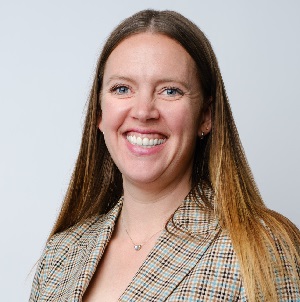

- 2 30 PM
Heidelberg Materials Edmonton CCUS - Project Update
Heidelberg Materials is committed to cumulatively capturing and storing 10 million tons of CO2 by 2030. Our Brevik plant is in construction, and 7 other large CCUS projects are in various stages of...
Knowledge Partner : Capital Power
 Exhibition Floor
Exhibition Floor 2:30 PM - 3:15 PM
2:30 PM - 3:15 PM
Heidelberg Materials Edmonton CCUS - Project Update
 2:30 PM - 3:15 PM
2:30 PM - 3:15 PM Exhibition Floor
Exhibition Floor
Heidelberg Materials is committed to cumulatively capturing and storing 10 million tons of CO2 by 2030. Our Brevik plant is in construction, and 7 other large CCUS projects are in various stages of development around the world. The Edmonton CCUS project development started in 2019, and is on track for a final investment decision in Q2-2024, which would allow the first CO2 to be captured and stored before the end of 2026. This project will use a post combustion amine capture system, coupled with a combined heat and power facility that will provide the heat and power required to run the capture process and the kiln processes, while exporting 70MW of low emission electricity to the local grid. The capture plant’s capacity to treat the flue gas from the kiln and the combined heat and power plant, in combination with kiln alternative fuels that contain biogenic carbon allows this plant to produce the world’s first net-zero carbon cement without purchasing offsets. The project is being delivered as a number of separate scopes utilizing a 2-stage competitive procurement process, in order to maximize engagement of local energy contractors and their capability, while achieving cost certainty in a competitive environment that ensures value. Long term on site piloting of the competing capture technology vendors has recently started, and will reduce the risk associated with the plants specific flue gas contaminants.
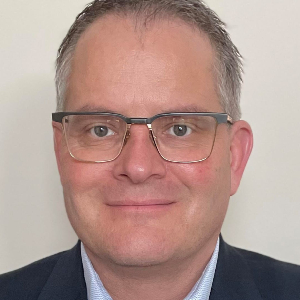
- 3 30 PM
Intermodal Liquid CO2 Transport Without Chilling
CanaGas has developed a large type-4 pressure vessel for the intermodal transport of gaseous fluids such as liquefied CO2. Three large tanks fit inside of an intermodal shipping container. The maxi...
Knowledge Partner : Capital Power
 Exhibition Floor
Exhibition Floor 3:30 PM - 4:10 PM
3:30 PM - 4:10 PM
Intermodal Liquid CO2 Transport Without Chilling
 3:30 PM - 4:10 PM
3:30 PM - 4:10 PM Exhibition Floor
Exhibition Floor
CanaGas has developed a large type-4 pressure vessel for the intermodal transport of gaseous fluids such as liquefied CO2. Three large tanks fit inside of an intermodal shipping container. The maximum capacity is 30 metric tonnes; however, to meet the road weight limitations in North America (using a three-axle chassis), approximately 25 MT would be carried. The advantage of the CanaGas system is that the transport modules are intermodal. So, CO2 can be transported for sequestration by truck or rail. Moreover, no chilling of the gas is required to make it liquid, just compression. At 50 bar and 25 C, the cargo will be nearly all liquid. The 100-Bar transport modules are designed to transport HDPE; however, on the back haul, the same transport modules can also transport liquid CO2 for sequestration. No cleaning of the tanks is required between loads.

- 4 30 PM
Industry Networking Reception
 4:30 PM - 6:00 PM
4:30 PM - 6:00 PM Exhibition Floor
Exhibition Floor
- 12 30 PM
Life-Cycle Carbon Intensity Importance in CCUS Applications
CCUS has the potential to reduce emissions significantly and provide a tangible pathway to decarbonization and ultimately a pathway to net zero. However, carbon intensity needs to be considered on...
Knowledge Partner : Capital Power
 Exhibition Floor
Exhibition Floor 12:30 PM - 1:15 PM
12:30 PM - 1:15 PM
Life-Cycle Carbon Intensity Importance in CCUS Applications
 12:30 PM - 1:15 PM
12:30 PM - 1:15 PM Exhibition Floor
Exhibition Floor
CCUS has the potential to reduce emissions significantly and provide a tangible pathway to decarbonization and ultimately a pathway to net zero. However, carbon intensity needs to be considered on a full life-cycle basis to show true reduction potential of CCUS. With natural gas commonly used as a fuel or feedstock to facilities where carbon capture is planned or currently applied, emissions associated with the upstream supply chain of natural gas are very important to consider. S&P Global Commodity Insights will show current work that is being done to quantify the intensity of the natural gas supply chain in Western Canada. This work forms the basis of benchmarks to which supply chain pathways may be compared to spotlight the benefit of CCUS on a full life-cycle basis.
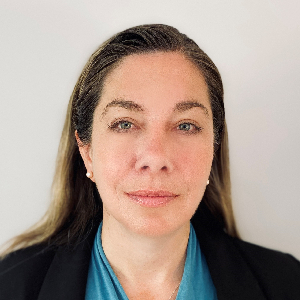
- 1 30 PM
Geomechanical and Economic Study of Caprock Integrity and Pressure Management for Risk Mitigation and Added Economic Benefit in CCS Projects
The successful commercial scale deployment of carbon capture and storage (CCS) requires the safe storage and containment of multi-mega tons of CO2 annually. It is critical to have a risk management...
Knowledge Partner : Capital Power
 Exhibition Floor
Exhibition Floor 1:30 PM - 2:15 PM
1:30 PM - 2:15 PM
Geomechanical and Economic Study of Caprock Integrity and Pressure Management for Risk Mitigation and Added Economic Benefit in CCS Projects
 1:30 PM - 2:15 PM
1:30 PM - 2:15 PM Exhibition Floor
Exhibition Floor
The successful commercial scale deployment of carbon capture and storage (CCS) requires the safe storage and containment of multi-mega tons of CO2 annually. It is critical to have a risk management plan for all stages of the CCS process. In this study, we focus on quantifying and decreasing the risks for caprock integrity and regional pressure increase. Injection of CO2 into a saline aquifer will cause a pressure increase. Projects targeting the same saline aquifer, such as the Basal Cambrian Sandstone (BCS) in central Alberta, may experience regional pressure increase due to CO2 injection from neighbouring projects. Regional pressure increase may result in a lower storage capacity than originally anticipated and could contribute to caprock failure. Water extraction wells can be incorporated into a CCS project to help mitigate these risks. Incorporating economics with the technical aspects of dewatering illustrates that it is possible that water extraction wells can financially benefit the project as they facilitate an increase in storage capacity. In conducting this study, a geocellular model was created of the BCS in central Alberta and its associated overlying and underlying formations. It was tuned with a history match process in dynamic simulation to ensure main CO2 trapping mechanisms are captured and key properties that affect storage capacity were identified. Available geological and engineering information on the caprock for many of these saline aquifers is generally poor. For this project, different models of the caprock above the BCS were built to investigate a range of possible configurations. This allowed the coupling of geomechanical analysis with fluid flow modelling. Microfractures in the caprock and their open stresses were incorporated into the model to investigate the potential of increased pressure causing opening and leakage through the microfractures into the overburden. Dewater wells in the model indicate how much water needs to be produced to lower regional pressure, de-activate microfractures, and eventually prevent leakage. If the CCS hubs are not operating in a closed boundary system, it is unavoidable that the pressure front will propagate out of the area of interest (AOI). This is mainly due to the low compressibility of the saline water in place. Incorporating dewater wells will mitigate the adverse effects to neighbouring hubs and reduce the risk of dispute. Pressure management by water extraction can significantly increase the CO2 storage capacity. This study will also present probabilistic economic models indicating how dewatering wells could affect the economics of a CCS project.


- 2 30 PM
The Impact of Modeling Depositional Environments on Above-Ground Considerations for CCS Projects
Subsurface modeling for Carbon Capture and Sequestration (CCS) is central to a project’s design, permitting, and monitoring. Visualized CO2 plume extents resulting from subsurface simulations are o...
Knowledge Partner : Capital Power
 Exhibition Floor
Exhibition Floor 2:30 PM - 3:15 PM
2:30 PM - 3:15 PM
The Impact of Modeling Depositional Environments on Above-Ground Considerations for CCS Projects
 2:30 PM - 3:15 PM
2:30 PM - 3:15 PM Exhibition Floor
Exhibition Floor
Subsurface modeling for Carbon Capture and Sequestration (CCS) is central to a project’s design, permitting, and monitoring. Visualized CO2 plume extents resulting from subsurface simulations are often used in the determination of mineral rights, landowner interactions, and pre-existing wellbore integrity considerations. Two key geological features affecting plume size and shape include porosity distributions and permeability anisotropies, which are influenced by paleo-environmental controls on depositional orientations within the intended injection interval. This study demonstrates how those environmental controls can preferentially direct injected CO2 along depositionally derived permeability pathways, creating dominant plume orientations. To meet this objective, Static Earth Models (SEMs) were created for three different scenarios: 1) a model which incorporates no depositional controls, 2) a model with north-south trending fluvial deposition, and 3) a model with east-west trending fluvial deposition. All SEMs were built in the same framework which incorporated no dip or fault elements. SEM 1 utilized isotropic variograms, while SEMs 2 and 3 incorporated fluvial bodies and anisotropic variograms to depict channel-like property orientations. Due to confidentiality constraints, the models utilized synthetic data. To keep the SEMs as statistically similar as possible, synthetic facies and property logs were upscaled at the injection well, while facies proportions and facies-based porosity and permeability distributions were set equal for all models. The resulting models show stochastically placed facies and properties for SEM 1, while SEMs 2 and 3 have organized property distributions consistent with their respective fluvial orientations. The three SEMs were imported into a dynamic reservoir simulator, subsequently creating three simulation cases. Each case utilized the same additional inputs, such as PVT data, relative permeability relationships and perforation intervals. Simulated injection rates were constrained at 90% of a 0.75 psi/ft fracture gradient, following EPA guidelines, and the simulation ran for 62 years, assuming continuous CO2 injection and 50 years post-injection. Following the simulation run, results were visually analyzed to compare plume size, shape, and orientation for each case. Results show a concentric plume around the injection well for SEM 1, which did not include any fluvial depositional controls. For SEMs 2 and 3, the plume showed preferential elongation parallel to the incorporated fluvial depositional orientation (N-S for SEM 2, E-W for SEM 3). These results indicate that depositionally controlled preferential flow directions are seen in simulation, supporting the significance of incorporating depositional environments into subsurface models, as they will have an impact on overall plume shape and orientation and ultimately impact above-ground considerations, such as land ownership and pre-existing wellbore remediation plans.



